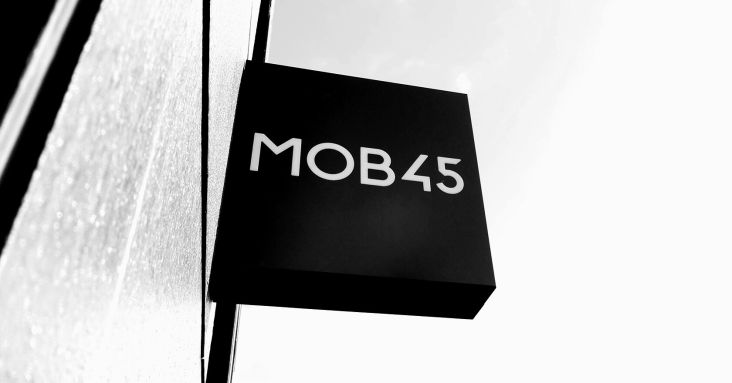18 PR mistakes that drive journalists absolutely crazy
Ok, so I'm a tad self-indulgent. But the purpose of this tips article is to help you stand a better chance of getting published. That's whether you're doing your marketing, or you're a PR professional working in an agency or freelancing.

Image licensed via Adobe Stock
I've been running Creative Boom for eight years in July, and my own PR firm for almost a decade. There are many things I've learned on both sides, so allow me to share some PR mistakes that drive us journalists mad.
We'll then attempt to show you the perfect PR pitch so that you can not only achieve that media coverage – but also build great relationships with journalists who think highly of you, and see you as one of the best PR people they know.
1. You don't research our newspaper, magazine or blog, and send us irrelevant stuff
Why does Creative Boom need to hear about your agency's new appointments? We're not a news industry magazine – it's clear on the About page what we write about. (We share creative people's work in the art, crafts, graphic design, illustration and photography sectors, and we provide tips and resources for creative professionals too. We also run interviews, studio tours and creative briefs. It's all there – for everyone to see!)
It doesn't take a lot of effort to research the title you're targeting, and you'll stand a better chance of coverage.
2. You provide a press release in an unusable PDF format
We like to copy and paste the press releases you send us. It saves us time and allows us to rewrite anything we want, quickly and easily. But when we get them as attached PDFs, the format can sometimes make everything out of sync, and we then have to type out everything again. Not good.
3. You send the wrong images
We're an online magazine, so why do you insist on sending us the highest of high-resolution images, in a CMYK format? We need web-ready jpegs, at least 1,200 pixels wide – and no more than that. We haven't got all day to go through and edit every picture. (Thank god for batch editing on Photoshop, that's all I'll say.)
4. You provide a link to images with no indication of what they might be
At least give us a hint at what we'll be downloading. We want a taster of what to expect. Especially because images can sometimes make or break a story. If they're not good enough, we'll have wasted our time and our bandwidth. If you're providing WeTransfer or Dropbox links, excellent – but give us an idea, please.
5. You end up emailing us 20+ times instead of just once
Why can't you send us everything we need in one email? Why do we have to go back and forth to request more stuff? And when we send you a preview of the article, why are you changing copy now? Why do we have to swap images? You're becoming annoying, and we're tired of seeing yet another email pop up from you.
6. You send emails assuming we'll know what they're about, but we don't
You send us an excellent press release – brilliant, and we email you back to request more stuff. But a day or so later, one of your colleagues sends us what we need in a separate email, with absolutely no indication as to what it's related to. We're left scratching our heads, trying to figure out what the story's about.
7. You don't use our name in your email pitch
Our name is right there, visible for all to see – in our email address, Twitter and Instagram. So why don't you start your message with a 'Dear Katy'? It's a simple gesture, but one that we appreciate. Oh, and make sure you spell our names correctly! (I'm not Kathy!!)
8. You pester us about whether we can attend your event in another country
Don't get me wrong; I'd love to go to New York and visit your gallery opening. But you seem to have missed one minor detail – I'm in Manchester, UK. That's England. Over 3,000 miles away. Unless you're prepared to pay for the flight, expenses, hotel accommodation – oh, and my standard day rate while I'm away, then no – sadly, I cannot attend your event.
9. You send us a great press release with no embargo, then tell us we can't cover the story
It's so frustrating to receive a wonderful press release and images, only to be told that we can't cover it. Your client might have told you that things are on hold. Or you may have struck a deal with a bigger and better media title which wants exclusivity. It's incredibly frustrating to tease us like that.
10. You send us a press release that has already been featured on other blogs
We'll look stupid and out-of-touch if we add a story that's already been shared elsewhere, so if you're going to fire out your account, make sure you send it to everyone at the same time. That way, we all get a fighting chance to publish your press release without feeling like sloppy seconds.
11. Your press release is wordy and full of gushing quotes, not key facts
If you're going to send us a press release, please stick to the facts and follow the old journalism rule of the Five Ws – What is happening? Who is involved? Where is it taking place? When is it? Why is it happening? Also, make these Five Ws clear straight away, so we don't have to dig through the copy and painstakingly extract what we need.
12. You put the word "delighted" in the opening sentence of a press release
We're delighted you've sent us a story. But we don't want to see the word "delighted" in any press release you email. Not in the opening sentence or any of the quotes you provide. Stick to the facts, please. That's all we ask.
13. You chase us to ask when the piece has gone live, when it's already published
And it's been published for over a week. Why didn't you check? We're journalists, and it's our job to write about things relevant to our audience. It's not our responsibility to do your job. You're the PR person – you're the one who should collect any coverage.
14. You ask us to send you a link when the story is up
We don't have time to inform you when your story has been published. We'd love to be able to help, but we run up to 10 stories every day, and we've got a serious amount of copywriting to get through. Surely, you're not asking us to add a task to our project management software, including the name of your story, the date of publication and your email address, so we're reminded to get back in touch with you? Please don't ask us to send you a PDF of the piece – again, that's your job, not ours.
15. You hassle us endlessly for coverage
Sometimes, your pitch won't be successful. And, likely, we won't have time to respond, telling you so. We don't have time to reply to everyone. To do that would mean we'd have to hire a full-time member of staff, just to handle emails. If you've not heard from us, assume your story isn't of interest – please don't email another three or four times, asking us if we've received it and when we're likely to cover it.
16. Your PR pitch was successful, but we can't reach you
You've done everything right, and we want to cover your story. But when we want to follow things up, we can't get a hold of you. We hear nothing for ages, and wonder if you've disappeared completely. In the meantime, the story becomes old news, and it's too late to publish when you do finally get in touch.
17. You phone us when we ask specifically for emails
If it says on our website that we only accept email pitches, we mean it. We don't want any phone calls; it would just take up too much of our time.
We once had a phone line for Creative Boom. Never again. The phone would start ringing from 8am, and wouldn't stop all day. Besides, we know how it plays out: "Hi there, I'm calling about a story about XXX. Can I send you an email?" Yes, we know your boss has said that telephone sell-ins are more effective than email; but that's not always the case. Certainly not these days. You're going to email us anyway; why do you need to speak to us?
18. You get fresh with us
Why are you taking this personally? We're journalists, and we're time-poor with scary deadlines. We have to be ruthless. And that might mean saying "no" to what you send us. It might mean that we change our minds and don't run anything at all after we said we would.
What can I say? Better stuff sometimes comes in. Priorities change. It's nothing personal. It's just business. Please don't be rude to us if we've not satisfied your needs – we still want to work with you!
Now that this cathartic experience is over, it's time to look at how you can successfully contact a journalist and achieve media coverage. Allow me to share the best email pitch I've ever received from a PR professional:
- The email subject line was enticing and non-spammy
- They began their message with a 'Dear Katy'
- They got straight to it and briefly told me what the story was about and where they felt it would sit nicely on Creative Boom (in this case, it was for the Inspiration Crafts section)
- They sent me a PDF press release, yes – but they also copied and pasted the text directly into the email, just in case.
- They made it clear when the story could be published; in this case – immediately
- They attached three low-resolution images to the email, giving me a hint at the images available to download
- They provided a Dropbox link to the images, offering both "low res" and "high res" versions; the low res pics were web-ready and in the RGB format (I didn't need to do any editing in Photoshop)
- They even recommended which of the jpegs would make a great cover pic, understanding that Creative Boom loves to use landscape images at the top of its articles
- They provided their contact details clearly and offered an interview with the quoted person within the press release
- They also told me when they would be available (and that they would respond within half an hour)
- The press release was well written, factual and hardly needed any tweaking
- They were so clear and concise, providing everything I needed the first time, I had no need to contact them other than to say "thank you".
Whenever this PR professional emails me now, I know that I'll get a first-class PR pitch, providing everything I need with absolutely no hassle. They understand how Creative Boom works. They know what we love. They're super professional and friendly. They send everything we need the first time.
It's a no brainer. Research the title you're targeting and find out whether they're likely to cover your story. Write an enticing email subject line, and a concise intro, and get straight to what the story is about and why it's relevant to the journalist. Provide a well-written press release and, if it must be in an attached PDF, at least copy and paste the text into the email as well. Attach a few low res jpegs to hint at accompanying images, and provide a link to download them. Within that link, offer both low and high res folders – make sure the low res versions are "web-ready".
Most importantly, only send us the good stuff – don't expect crap stories to get coverage. Put your journalist hat on, and consider whether something is newsworthy and likely to be published.
After you've done all that, don't hassle us. Just be confident that your pitch was strong, and that we'll be in touch if you're successful.
If you follow our advice and understand the frustrations journalists experience, you'll stand a much better chance of building great media contacts and securing coverage for yourself or your clients.




 by Tüpokompanii](https://www.creativeboom.com/upload/articles/58/58684538770fb5b428dc1882f7a732f153500153_732.jpg)


 using <a href="https://www.ohnotype.co/fonts/obviously" target="_blank">Obviously</a> by Oh No Type Co., Art Director, Brand & Creative—Spotify](https://www.creativeboom.com/upload/articles/6e/6ed31eddc26fa563f213fc76d6993dab9231ffe4_732.jpg)











](https://www.creativeboom.com/upload/articles/51/5154f8a374d0d7c6e39a4dee5e7eb07b4e88d38b_732.jpeg)

](https://www.creativeboom.com/upload/articles/7e/7ece1f1793cebbb0593b2685932130e39da0e2d3_732.jpeg)


